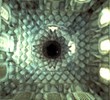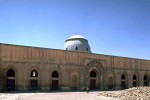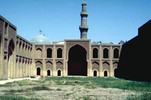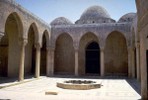Previous Lecture | Next Lecture
Concepts
Post-Seljuq Period: After the desintegration of the Great Seljuq Empire, many spin-off dynasties carved out smaller provinces in Anatolia (which opened up to Turkish immigration after the Seljuks defeated the Byzantines at the battle of Manzikert in 1071), Syria, and Mesopotamia. The most important among them were the Seljuqs of Rum (Anatolia) and the Zengids.
The Crusades: A series of campaigns launched in 1099 by Christian Europe against the Islamic East, ostensibly to liberate the Holy Land. In 1187, Salah al-Din (Saladin), the founder of the Ayyubid dynasty, took Jerusalem back. In 1292, Acre, the last stronghold of the Crusaders in Palestine, fell to the Mamluks.
The Counter-Crusade: A movement to recover the Islamic lands occupied by the Crusades. It was fueled by the ruling military and religious elite as part of a wider moral reinvigoration of the community that was translated architecturally in the spread of religious institutions such as madrasas and mausolea.
Monuments
The Madrasa of Nur al-Din at Damascus
(1167-68): A representative of the iwan plan, this is the premier royal madrasa in Damascus. It is distinguished by its tiered muqarnas dome. The madrasa type is believed to have been imported from the eastern Iranian realm of the Seljuqs and spread all over Syria and Anatolia in the twelfth century and Egypt in the thirteenth.
The Great Mosque of Dunaysir (Kochisar)
Heavily influenced by the plan of the Umayyad mosque in Damascus, this mosque, founded in 1214, exhibits the interaction between Iranian, Classical, and Syrian traditions in the Medieval architecture of Upper Mesopotamia.
The Great Mosque and Hospital of Divrik (Divrigi)
Established by the wife of Ahmet Shah, the Mengujukid ruler of the city, in 1228-29, the mosque manifests the new development of hypostyle mosques in Anatolia (the reduction of the court), and the fusion of several traditions in the nascent architectural vocabulary. Very complex, and sometimes chaotic, themes and modes of stone carving appear in the portals. This makes the entire structure a curious museum of the various Anatolian decorative styles of the period.
The Madrasa al-Mustansiriyya in Baghdad
(finished 1233). A late Abbasid tour-de-force, this monumental madrasa was built by the caliph al-Mustansir on a site overlooking the river Tigris. It accommodated teaching in the four schools of Sunni jurisprudence and in hadith (Prophet's traditions), and students were lodged in separate cells on two floors. The madrasa's choice location and pronounced monumentality reflect its high caliphal patronage.
The Madrasa al-Firdaws in Aleppo
(1235-36): Founded by Dhayfa Khatun, the strong wife of the Ayyubid ruler of Aleppo al-Zahir Ghazi. This is the most celebrated Syrian madrasa and the finest example of austere stone architecture. It is balanced in composition and conservative in decoration with a fine mihrab topped with a "Syrian knot," a decorative element that later spread to Anatolia.









